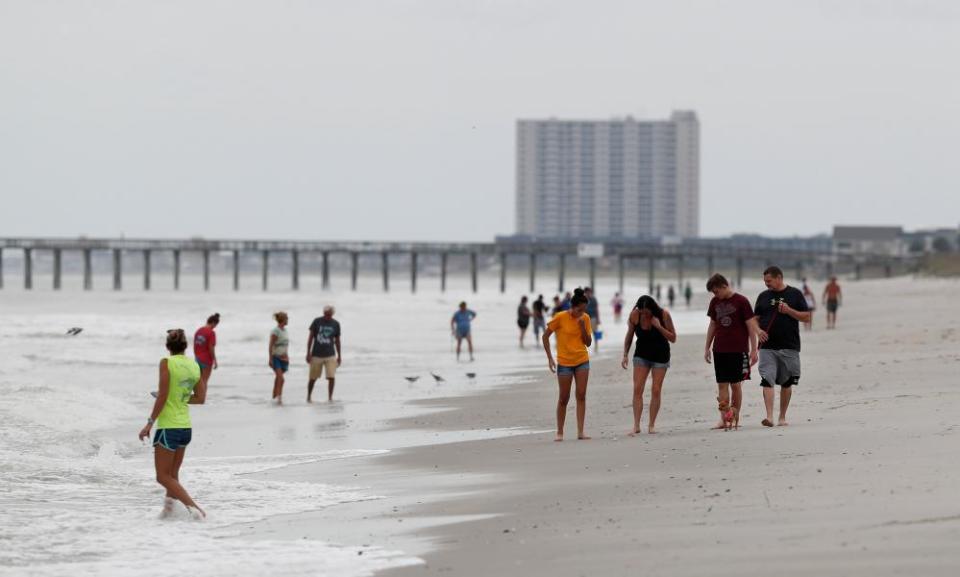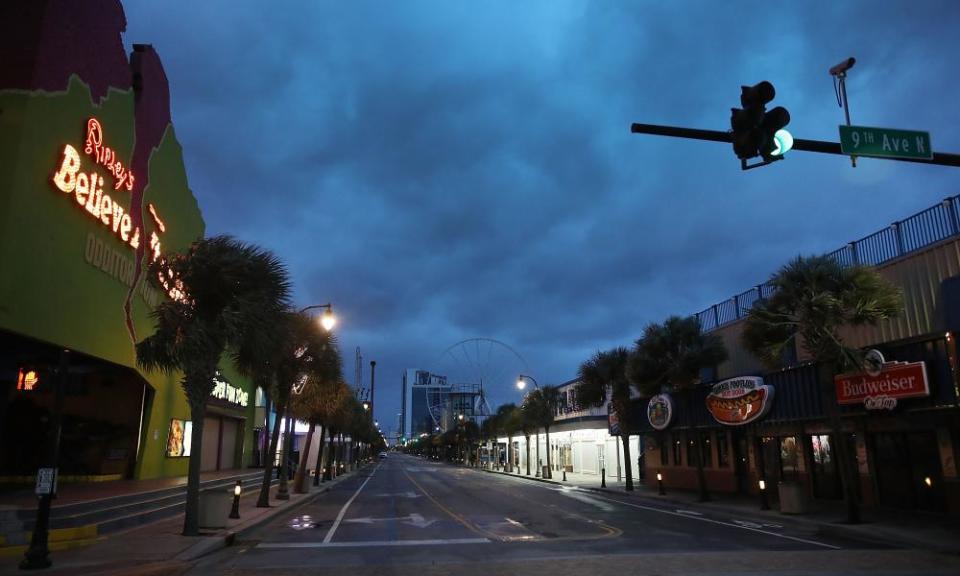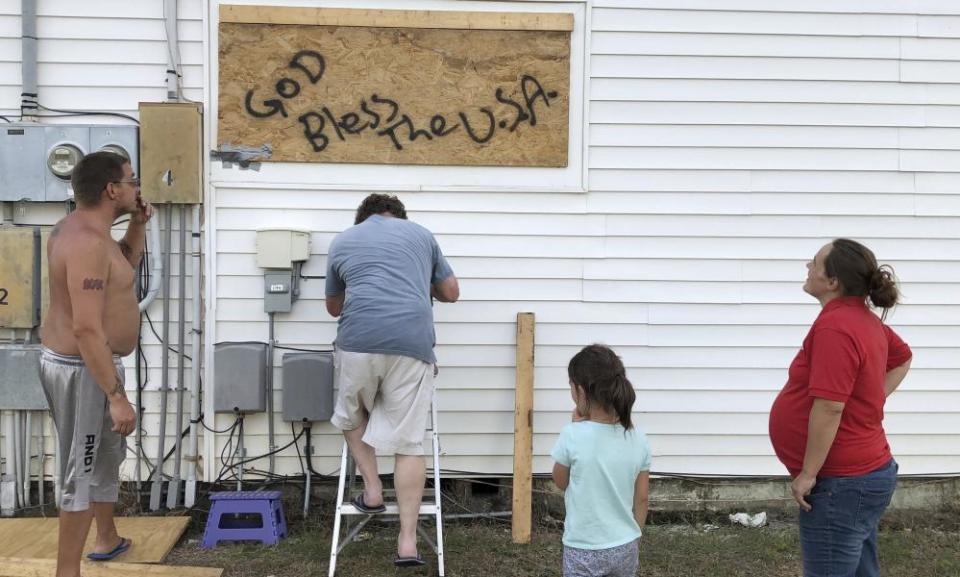Myrtle Beach's rapid growth means more people in Hurricane Florence's way
Both businesses and housing have seen thousands of people move to the South Carolina beach city in recent years

The Carolinas coast, like much of America, loves a strip mall.
Myrtle Beach, in South Carolina, did not escape the trend. Highways in this low-lying coastal city, directly in the path of Hurricane Florence, which made landfall in North Carolina on Friday morning, are lined with the ubiquitous stretches of concrete.
The problem in Myrtle Beach is that the area’s rapid expansion of both businesses and housing has seen thousands of people move here in recent years – people who now found themselves in Florence’s way.
Driving along US Route 17, a three-lane highway that pierces the Horry county neighborhoods of Surfside Beach, Myrtle Beach and North Myrtle Beach, carries none of the idealized glamor of the fabled American road trip.
Strip malls – stretches of roadside filled with mainly uninspiring, single-story rows of small businesses – flash by, the same chains reoccurring. Dollar General. McDonald’s. Krispy Kreme Doughnuts. A mobile phone store, a bank, a pawn shop. Another Dollar General. Another McDonald’s.

It wasn’t meant to be this way. Once this stretch of the “Grand Strand” coastline – which runs for 60 miles along north-eastern South Carolina – was forest, with creeks and rivers flowing through the trees. The Atlantic Ocean to the east and the Intracoastal Waterway to the west and the land was fertile, green and wet.
But nothing lasts forever, and that began to change in the 1900s, as companies exploited the timber, before Myrtle Beach grew into a tourist destination. These days the only sign of the area’s woodland past is the occasional gap of greenery in the parts of Myrtle Beach and its surrounds that are yet to be slathered with concrete.
And while this is far from the only place in the US to have experienced development that brutally jars with its natural appearance, the difference here is that the strip malls and tower blocks have been built on low-lying, vulnerable land, much of which has only been opened up for rampant construction over the past couple of decades.
More than $300m has been spent on construction in Myrtle Beach in 2018 alone, and between July 2016 and July 2017 only one metro area in the US saw a bigger population increase than the Conway-Myrtle Beach-North Myrtle Beach conurbation. The 3.7% increase in that 12-month period was spurred, in part, by cheap housing. The median home price in the area is $208,900 – significantly cheaper than other coastal cities in South Carolina.
That affordability is down to loose development laws. Carolina Forest, a planned neighborhood, is a prime example of the rapid expansion. As the name suggests, Carolina Forest was once sparsely populated woodland, but now almost 35,000 people live in the area. It began to expand rapidly in 1997 after the Horry county council froze zoning rules in exchange for developers committing to build parks and roads as well as homes.
The pace of the development has caused problems in areas across the county. Last year residents in the North Village area of Little River, close to North Myrtle Beach, warned that they risked flooding “every time it rains”, blaming water runoff and excess water being pumped away from a new housing development close by. Newer homes had been built upland, stripping the landscape before construction, and water from heavy rain flows downhill to their properties.

It’s a documented problem. One of the reasons Houston, Texas, flooded so badly during tropical storm Harvey last year was the city’s rapid expansion – with hundreds of square miles of pavement and tens of thousands of houses added in just a few decades on land prone to flooding. Just like in Little River, water cascaded downward from new homes and neighborhoods, swamping older homes. Flooding can also be made worse by the platforms of concrete lessening the area where water could potentially drain into the ground.
Politicians have ignored dire warnings from experts about the increased risk of flooding and rising sea levels – and in North Carolina, just 10 miles north-east of Myrtle Beach, they have, by law, been forced to ignore warnings.
In 2012 North Carolina banned legislators from using sea level forecasts by the Coastal Resources Commission – after the commission predicted that sea levels could rise by 39in over the next 100 years. Instead, the state said projected rates of sea level increase should be based on historical trends – not the latest science that tracks climate change, which potentially opened up at-risk areas for further development.
South Carolina did not follow suit, but through its rapid expansion, the state may have put itself at risk without the need officially to reject the science. In Myrtle Beach and its surrounding areas, residents will hope that the Grand Strand coast hasn’t overreached in its bid for further grandeur.

